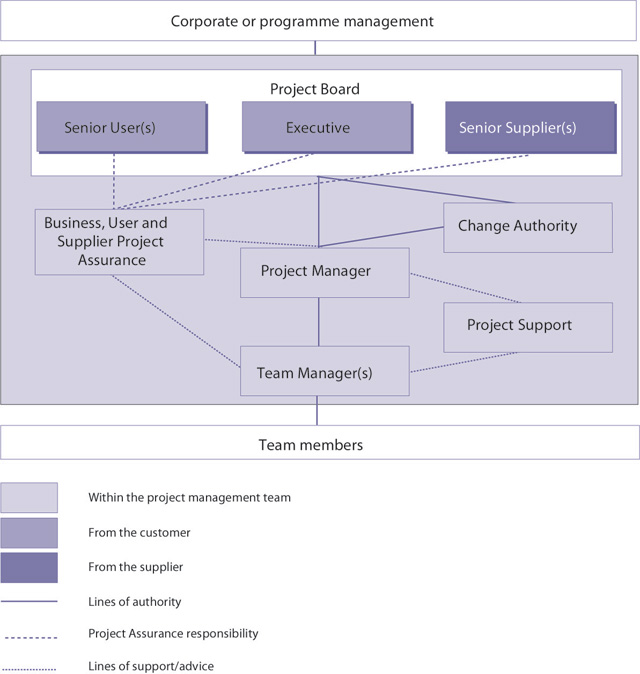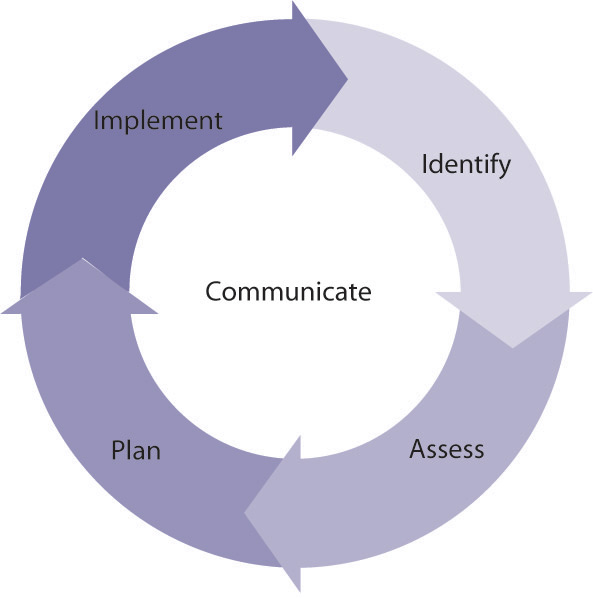|
Steve Jobs' recent death has brought up a huge amount of discussion. His innovation for great products and financial success at Apple has deemed him a genius - giving him a Godlike status. It is without question that from 1997 onward, Jobs saved Apple from failure and has revolutionised the computing industry while making a lot of money in the process. However, he did this with a very unorthodox management style. In fact he flew in the face of the management technique of other Silicon Valley companies. |

While Google and Microsoft promote openness and strive to make their employees happy, Apple is incredibly secretive and most employees lived in fear of Jobs: but it worked. So how did Steve Jobs achieve such success while ignoring all traditional notions of business management?
Craig Charley
17 Oct 2011
|
Steve Jobs' recent death has brought up a huge amount of discussion. His innovation for great products and financial success at Apple has deemed him a genius - giving him a Godlike status. It is without question that from 1997 onward, Jobs saved Apple from failure and has revolutionised the computing industry while making a lot of money in the process. However, he did this with a very unorthodox management style. In fact he flew in the face of the management technique of other Silicon Valley companies. |

While Google and Microsoft promote openness and strive to make their employees happy, Apple is incredibly secretive and most employees lived in fear of Jobs: but it worked. So how did Steve Jobs achieve such success while ignoring all traditional notions of business management?
Craig Charley
17 Oct 2011
Video is a great tool for anything from marketing to in house training as video content starts to replace written content. The way we digest and interact with media is changing and video is playing a huge part in this - you are more likely to see a video go viral than an article. Today's blog looks specifically at video for training purposes and how it can benefit your company.
We offer comprehensive training to help you produce web-friendly video content and comprehensive Adobe Premiere Elements Training

to help you edit your videos to a professional standard.
However, a lot of people don't have the time to produce their own video - and there are some
great production companies out there who can help you.
In this post Guest blogger Andy Havard explains the benefits of using video for training.
Andy is a Marketing Executive at Skeleton Productions, a UK based corporate video production company.
Why Training Videos Are Becoming A Huge Benefit To Businesses Of All Niches
Training videos aren’t a new revolutionary training tool, in fact they’ve been around for years and years. What has became revolutionary though is video itself. Gone are the days where only blue chip corporates could afford to create training videos and long gone are the days of having to traingroups of staff by a worn out VHS tape on a battered old TV. This article explores the great new benefits of using training video in the 21st century and how it can become an essential tool for employees of any business.
1. Video Is Very Flexible
Video as a media is incredibly flexible. It can be burnt onto a DVD disc, copied onto USB sticks, embedded on Power Point presentations, emailed to staff and hosted on the Internet. Videos ability to be both digital and physical in format allows it to become a very versatile training material. It can be viewed on virtually any platform from phones and tablets to TV’s, computers and projectors. This makes your training video content adaptable to meet the needs of both your staff and your business.
Guest Author
30 Sep 2011
Video is a great tool for anything from marketing to in house training as video content starts to replace written content. The way we digest and interact with media is changing and video is playing a huge part in this - you are more likely to see a video go viral than an article. Today's blog looks specifically at video for training purposes and how it can benefit your company.
We offer comprehensive training to help you produce web-friendly video content and comprehensive Adobe Premiere Elements Training

to help you edit your videos to a professional standard.
However, a lot of people don't have the time to produce their own video - and there are some
great production companies out there who can help you.
In this post Guest blogger Andy Havard explains the benefits of using video for training.
Andy is a Marketing Executive at Skeleton Productions, a UK based corporate video production company.
Why Training Videos Are Becoming A Huge Benefit To Businesses Of All Niches
Training videos aren’t a new revolutionary training tool, in fact they’ve been around for years and years. What has became revolutionary though is video itself. Gone are the days where only blue chip corporates could afford to create training videos and long gone are the days of having to traingroups of staff by a worn out VHS tape on a battered old TV. This article explores the great new benefits of using training video in the 21st century and how it can become an essential tool for employees of any business.
1. Video Is Very Flexible
Video as a media is incredibly flexible. It can be burnt onto a DVD disc, copied onto USB sticks, embedded on Power Point presentations, emailed to staff and hosted on the Internet. Videos ability to be both digital and physical in format allows it to become a very versatile training material. It can be viewed on virtually any platform from phones and tablets to TV’s, computers and projectors. This makes your training video content adaptable to meet the needs of both your staff and your business.
Guest Author
30 Sep 2011
PRINCE2® Themes – Organisation
The purpose of the Organisation theme is to define and establish the project’s structure of accountability and responsibilities (the who?).
There are four layers of management in a project:
- Corporate or Programme Management
- Project Board
- Project Manager
- Team Managers

© Crown Copyright 2009. Reproduced under Licence from OGC
- Executive – a key decision maker who owns the business case
- Senior User – Provides user resources. Defines and verifies user requirements and expectations.
- Senior Supplier – Provides supplier resources.
- Project Assurance – Advises on selection of team members. Advises on stakeholder engagement.
- Project Manager – Prepares strategies. Reviews and updates project management team structure. Prepares role descriptions.
- Team Managers – Manage team members. Advises on team members and stakeholder engagement.
- Project Support – Provide administrative support to the project management team.
Some of the PRINCE2 roles cannot be shared or delegated. The Project Manager role cannot be shared or the decision making roles and responsibilities of the Project Board or Project Manager.
Andy Trainer
12 Jul 2007
PRINCE2® Themes – Risk Management
The purpose of the Risk theme is to identify, assess and control uncertainty and, as a result, improve the ability of the project to succeed.
Risk taking in projects is inevitable since projects are enablers of change and change introduces uncertainty, hence risk. Management of risk should be systematic and not based on chance. It is about the proactive identification, assessment and control of risks that might affect the delivery of the project’s objectives.
The project should establish and maintain a cost effective risk management procedure. The aim is to support better decision making through a good understanding of risks – their causes, likelihood, impact, timing, and the choice of responses to them.
Management of risk is a continual activity, performed throughout the life of the project. Without an ongoing and effective risk management procedure it is not possible to give confidence that the project is able to meet its objectives and therefore whether it is worthwhile for it to continue. Hence effective risk
management is a prerequisite of the continued business justification principle.
Risk management:
For risk management to be effective, risks need to be:
- Identified This includes risks being considered that could affect the achievement of the project’s objectives, and then described to ensure that there is a common understanding of these risks
- Assessed This includes ensuring that each risk can be ranked in terms of estimated likelihood, impact and immediacy, and understanding the overall level of risk associated with the project
- Controlled This includes identifying appropriate responses to risks, assigning risk owners, and then executing, monitoring and controlling these responses.
Risk Management procedure

© Crown Copyright 2009. Reproduced under Licence from OGC
PRINCE2 recommends a risk management procedure comprising the following five steps:
- Identify (context and risks)
- Assess (i.e. Estimate and Evaluate)
- Plan
- Implement
- Communicate
The first four steps are sequential, with the ’Communicate’ step running in parallel because the findings of any of the other steps may need to be communicated prior to the completion of the overall process. All of the steps are iterative in nature in that when additional information becomes available, it is often necessary to revisit earlier steps and carry them out again to achieve the most effective result.
In addition to our PRINCE2 Courses we can also arrange Risk Management course on a private basis on dates to suit.
Andy Trainer
12 Jul 2007
What are the necessary skills to be a good trainer?

Train the Trainer
At Silicon Beach Training we provide a train the trainer course to teach you the skills you need to become a great trainer. However, if you think you already have what it takes - try this 10-point self-assessment!
Can you...
- Actively listen without interrupting?
- Be flexible and responsive?
- Sense the mood of the group and work with it?
- Challenge underlying tensions or hidden feelings and bring them to the surface?
- Provide an atmosphere conducive to learning?
- Maintain control and direction and steer the group in a positive way?
- Involve all members of the group both outgoing and shy?
- Validate what group members say, support and encourage them?
- Deal constructively with difficult or disruptive group members?
- Use questioning and probing techniques effectively?
These are just some of the more subtle aspects in which an effective trainer needs to be proficient.
REMEMBER- training is a skilled process, it can look easy but it isn't! Trying to facilitate a group in the same way as chairing a meeting will not have the desired result and can cause many more problems than it solves!
Listening
Active listening is the key skill for a trainer.
You probably already know this (but sometimes it helps to be reminded!): Listening is very different from hearing. When we hear, the information may flow through our ears without really registering in the brain.
Listening has at least three different stages: hearing, interpreting, and recalling.
- Hearing: the physical action of the sound on our ear
- Interpreting: interpreting the message from the words that we hear, the tone and inflection of the voice, as well as the person's facial expressions and body movements. We also make interpretations dependent upon our own experiences in life.
- Recalling: registering the message and recalling it later in the conversation.
Active listening involves all three of these processes and means you need to:
- Give your complete attention to the other person or people for a specific period of time
- Forget any preoccupations you may have
- Suspend your judgement about what they are saying
- Listen to the feeling behind the words and reflect it to the group using phrases like; "it sounds as if you are very angry about that, is that right?"
- Listen to the silence and what it means; is it a comfortable or an angry silence?
- Watch for any non-verbal clues from group members; they will help let you know when someone is disinterested, shy, anxious, domineering, bored, angry, or open etc
Andy Trainer
6 Apr 2007
What are the necessary skills to be a good trainer?

Train the Trainer
At Silicon Beach Training we provide a train the trainer course to teach you the skills you need to become a great trainer. However, if you think you already have what it takes - try this 10-point self-assessment!
Can you...
- Actively listen without interrupting?
- Be flexible and responsive?
- Sense the mood of the group and work with it?
- Challenge underlying tensions or hidden feelings and bring them to the surface?
- Provide an atmosphere conducive to learning?
- Maintain control and direction and steer the group in a positive way?
- Involve all members of the group both outgoing and shy?
- Validate what group members say, support and encourage them?
- Deal constructively with difficult or disruptive group members?
- Use questioning and probing techniques effectively?
These are just some of the more subtle aspects in which an effective trainer needs to be proficient.
REMEMBER- training is a skilled process, it can look easy but it isn't! Trying to facilitate a group in the same way as chairing a meeting will not have the desired result and can cause many more problems than it solves!
Listening
Active listening is the key skill for a trainer.
You probably already know this (but sometimes it helps to be reminded!): Listening is very different from hearing. When we hear, the information may flow through our ears without really registering in the brain.
Listening has at least three different stages: hearing, interpreting, and recalling.
- Hearing: the physical action of the sound on our ear
- Interpreting: interpreting the message from the words that we hear, the tone and inflection of the voice, as well as the person's facial expressions and body movements. We also make interpretations dependent upon our own experiences in life.
- Recalling: registering the message and recalling it later in the conversation.
Active listening involves all three of these processes and means you need to:
- Give your complete attention to the other person or people for a specific period of time
- Forget any preoccupations you may have
- Suspend your judgement about what they are saying
- Listen to the feeling behind the words and reflect it to the group using phrases like; "it sounds as if you are very angry about that, is that right?"
- Listen to the silence and what it means; is it a comfortable or an angry silence?
- Watch for any non-verbal clues from group members; they will help let you know when someone is disinterested, shy, anxious, domineering, bored, angry, or open etc
Andy Trainer
6 Apr 2007